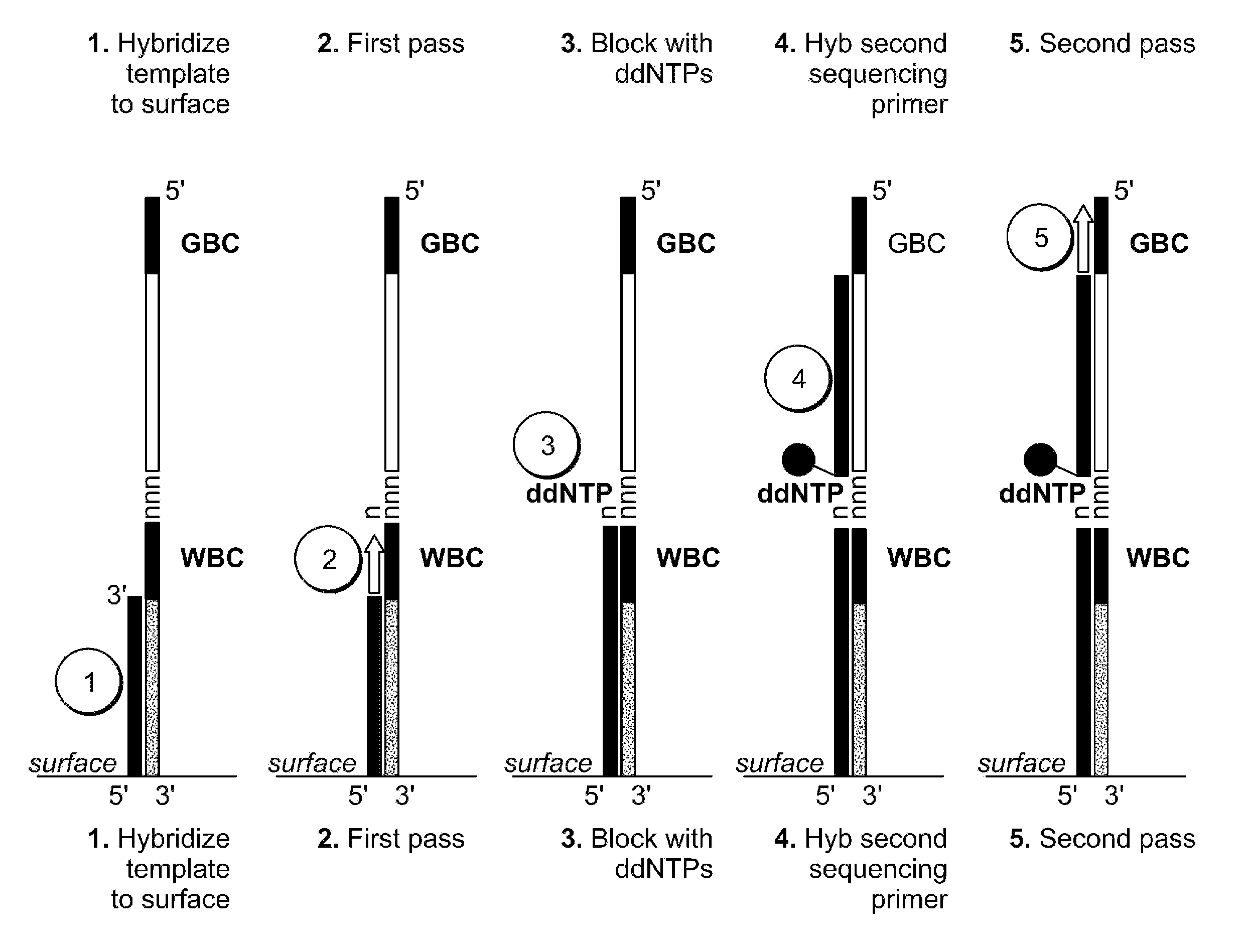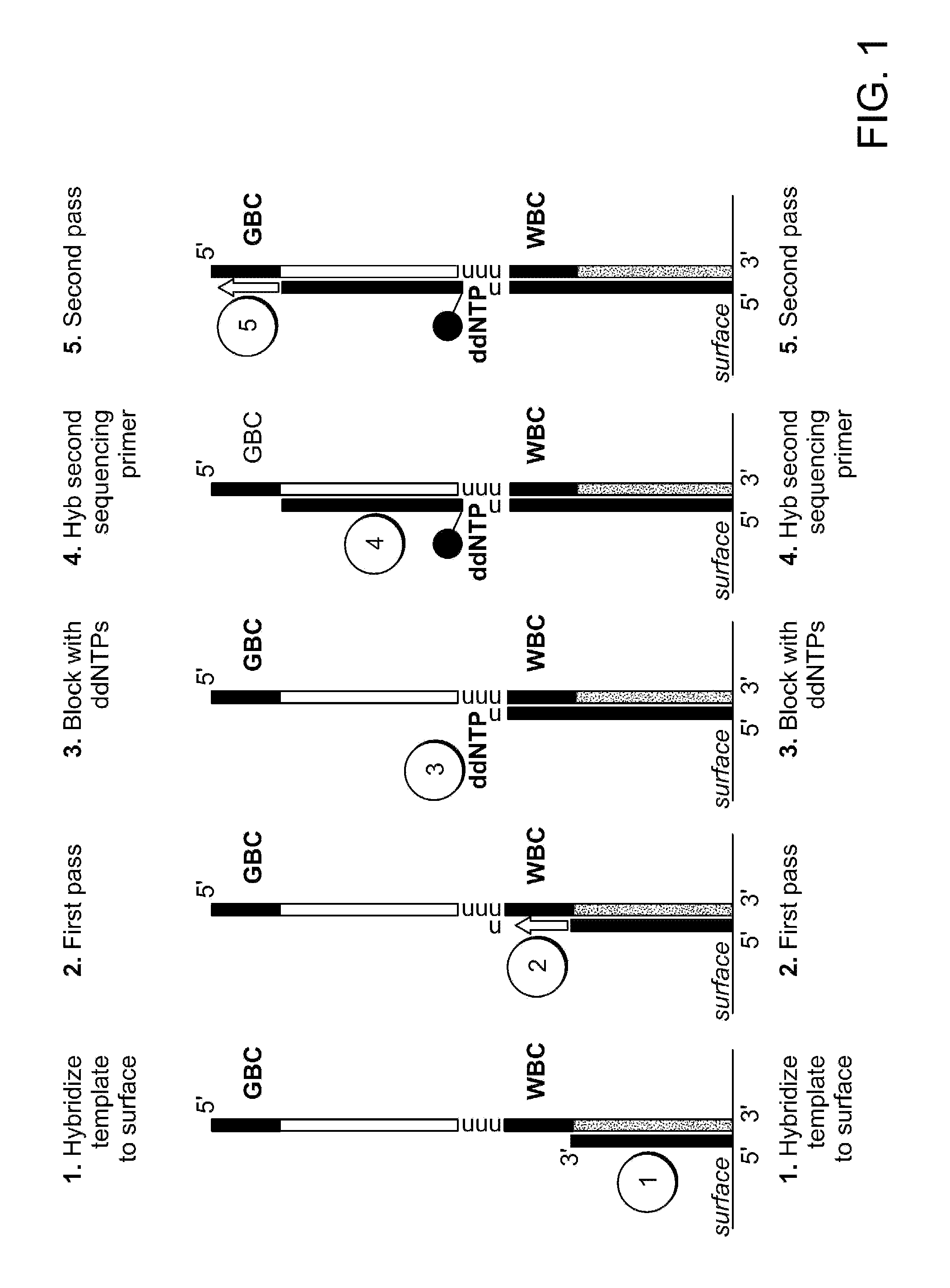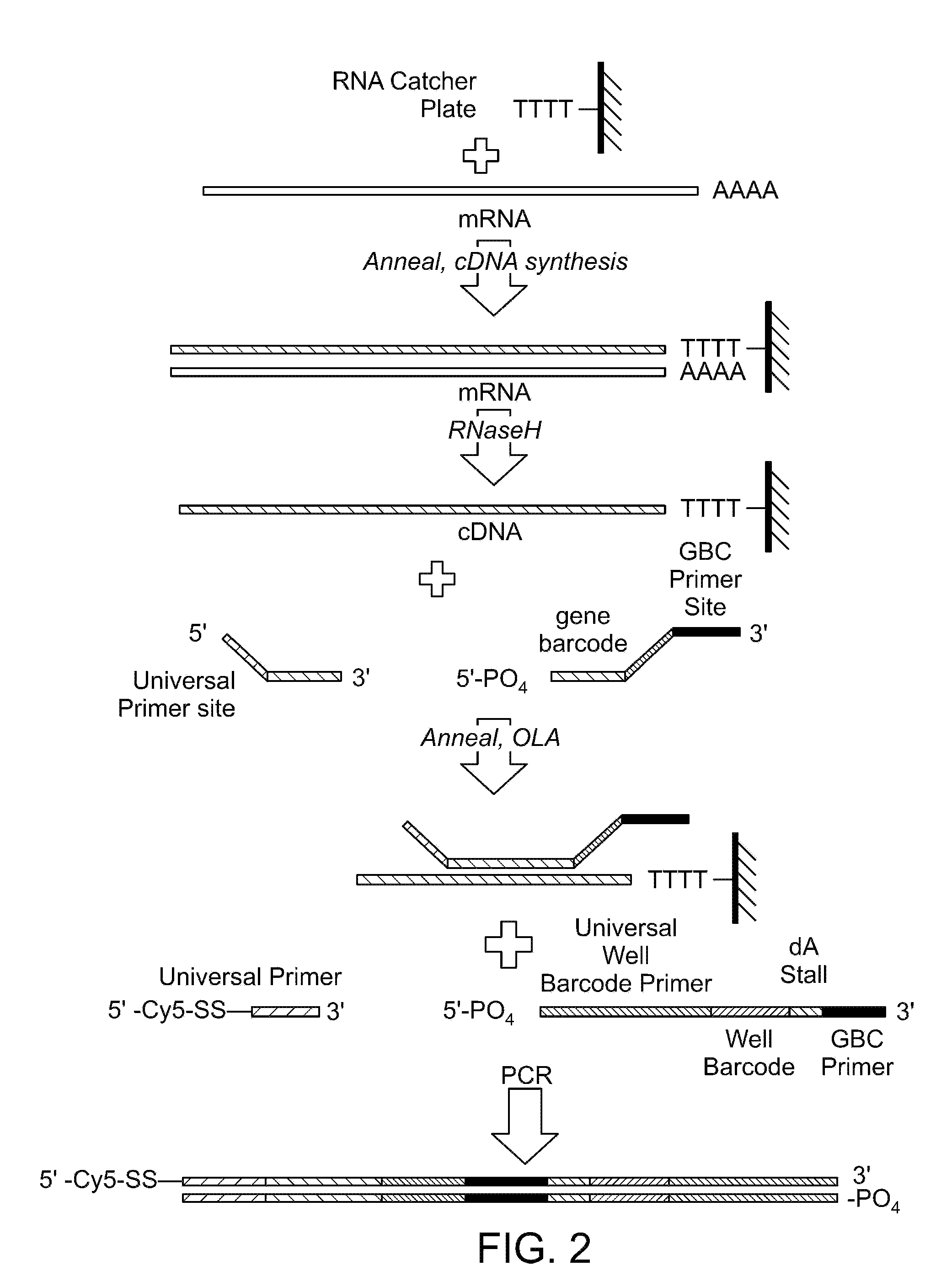Two-primer sequencing for high-throughput expression analysis
- Summary
- Abstract
- Description
- Claims
- Application Information
AI Technical Summary
Benefits of technology
Problems solved by technology
Method used
Image
Examples
example
[0098]Epoxide-coated glass slides are prepared for oligo attachment. Epoxide-functionalized 40 mm diameter #1.5 glass cover slips (slides) are obtained from Erie Scientific (Salem, N.H.). The slides are preconditioned by soaking in 3×SSC for 15 minutes at 37° C. Next, a 500-pM aliquot of 5′ aminated oligonucleotide (TCCACTTATCCTTGCATCCATCCTCTGCCCTG (SEQ ID NO:32)) is incubated with each slide for 30 minutes at room temperature in a volume of 80 ml. The slides are then treated with phosphate (1 M) for 4 hours at room temperature in order to passivate the surface. Slides are then stored in 20 mM Tris, 100 mM NaCl, 0.001% Triton X-100, pH 8.0 at 4° C. until they are used for sequencing.
[0099]For sequencing, the slide is placed in a modified FCS2 flow cell (Bioptechs, Butler, Pa.) using a 50-μm thick gasket. The flow cell is placed on a movable stage that is part of a high-efficiency fluorescence imaging system built based on a Nikon TE-2000 inverted microscope equipped with a total int...
PUM
| Property | Measurement | Unit |
|---|---|---|
| Fraction | aaaaa | aaaaa |
| Fraction | aaaaa | aaaaa |
| Fraction | aaaaa | aaaaa |
Abstract
Description
Claims
Application Information
 Login to View More
Login to View More - R&D
- Intellectual Property
- Life Sciences
- Materials
- Tech Scout
- Unparalleled Data Quality
- Higher Quality Content
- 60% Fewer Hallucinations
Browse by: Latest US Patents, China's latest patents, Technical Efficacy Thesaurus, Application Domain, Technology Topic, Popular Technical Reports.
© 2025 PatSnap. All rights reserved.Legal|Privacy policy|Modern Slavery Act Transparency Statement|Sitemap|About US| Contact US: help@patsnap.com



